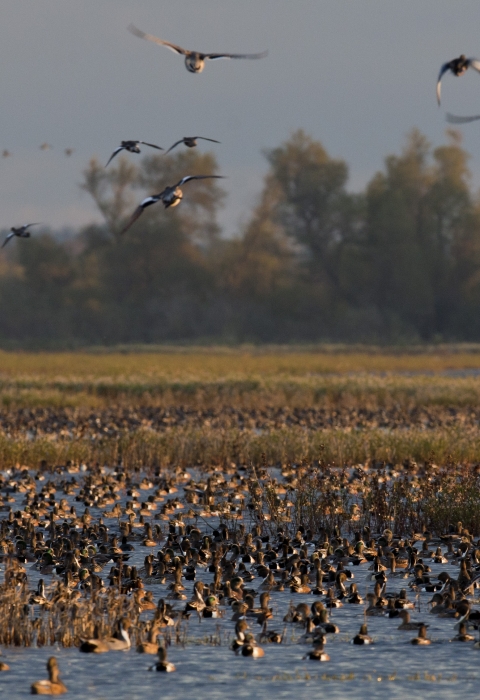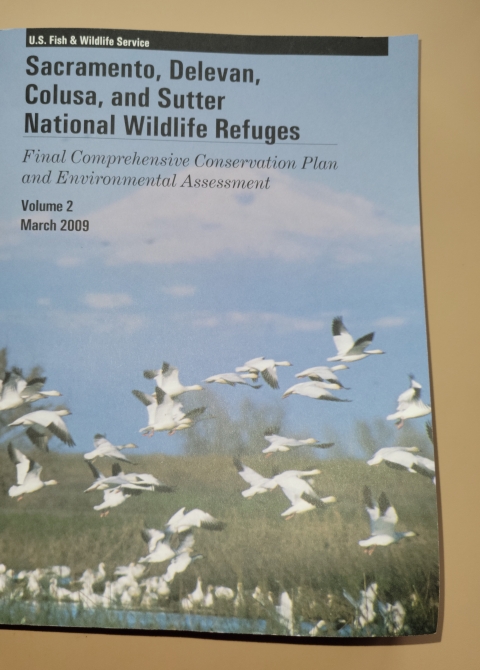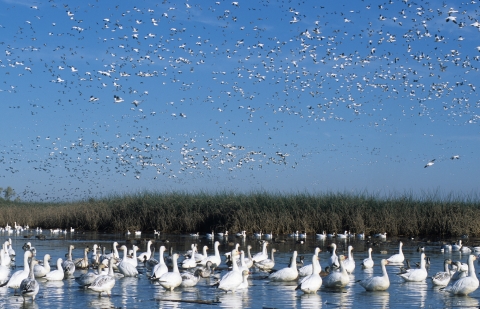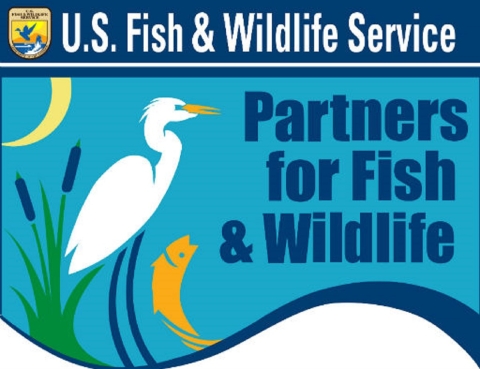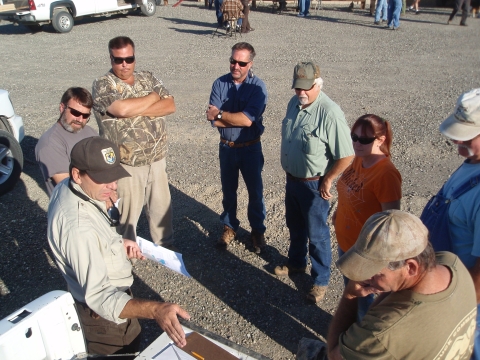What We Do
Scroll down to find information on:
Conservation and Partnerships, Private Lands Program, Law Enforcement, Rules & Policies
_____________________________________________________
Conservation and Partnerships
The Complex is involved in many conservation endeavors, including Comprehensive Conservation Plans, Private Landowner Programs, and the National Wildlife Refuge System Improvement Act.
Comprehensive Conservation Plans
Refuge Planning: National Wildlife Refuge planning sets the broad vision for refuge management and the goals, objectives, strategies, and actions required to achieve it. Planning ensures that each refuge meets its individual purposes, contributes to the Refuge System’s mission and priorities, is consistent with other applicable laws and policies, and enhances conservation benefits beyond refuge boundaries.
Comprehensive Conservation Plans (CCPs) are the primary planning documents for National Wildlife Refuges. As outlined in the National Wildlife Refuge System Administration Act, as amended, the U.S. Fish and Wildlife Service (Service) is required to develop CCPs that guide refuge management for the next 15 years. CCPs articulate the Service’s contributions to meeting refuge purposes and the National Wildlife Refuge System mission. CCPs serve as a bridge between broad, landscape-level plans developed by other agencies and stakeholders and the more detailed step-downs that stem from Refuge CCPs.
CCP: Wildlife Management Areas
The Final CCP and Environmental Assessment for the Butte Sink, North Central Valley, and Willow Creek-Lurline Wildlife Management Areas was completed in 2020. These WMAs include both Service-owned lands and private lands that are protected with conservation easements. This CCP includes the following WMAs:
• Butte Sink
• Willow Creek-Lurline
• Steve Thompson North Central Valley
CCP: Sacramento, Delevan, Colusa and Sutter NWRs
The Final CCP and Environmental Assessment for Sacramento, Delevan, Colusa, and Sutter NWRs was completed in March, 2009 and includes the following refuges:
• Sacramento NWR
• Delevan NWR
• Colusa NWR
• Sutter NWR
CCP: Sacramento River NWR
The Final CCP and Environmental Assessment for the Sacramento River NWR was completed in July, 2005. This CCP includes the Sacramento River NWR.
Step-down Plans
CCP step-down plans guide refuge-level programs for:
- Conserving natural resources (e.g., fish, wildlife, plants, and the ecosystems they depend on for habitat);
- Stewarding other special values of the refuge (e.g., cultural or archeological resources, wilderness, wild and scenic rivers, etc.);
- Engaging visitors and the community in conservation, including providing opportunities for wildlife-dependent recreation.
Like CCPs, step-down plans contribute to the implementation of relevant landscape plans by developing SMART (Specific, Measurable, Achievable, Relevant, and Time-bound) objectives, strategies, implementation schedules, and decision support tools to fulfill refuge visions and goals. This ensures that refuges are managed in a landscape context and that conservation benefits extend beyond refuge boundaries.
_____________________________________________________
Private Lands Programs
Our Private Lands staff works with private landowners, partnering agencies and conservation groups to provide information and assistance for the preservation and enhancement of a variety of habitats throughout the Sacramento Valley.
Visit ourPrivate Lands Programs page to find out more about our:
• Conservation Easement Program
• Partners for Fish and Wildlife Program
• Technical Assistance Program
The Private Lands Program was initiated at Sacramento NWR Complex in 1981 to protect private wetlands in the Sacramento Valley for the benefit of migratory birds and other wetland dependent wildlife. Initially, the focus of the private lands staff was implementing the Service's Conservation Easement Program to protect existing wetland resources. Over the years, the Private Lands Program has grown to include the Partners for Fish and Wildlife Program and an active Technical Assistance Program. Today, the private lands staff works not only to protect wetlands but to restore, enhance and manage a variety of habitats for the benefit of migratory birds, anadromous fish, and threatened and endangered species. Learn more about our programs below.
Conservation Easement Program
The Conservation Easement Program is a voluntary program where willing landowners are paid a percentage of their wetland or agricultural property's fair market value for purchase of the farming and development rights in perpetuity.
The Service has been implementing the Conservation Easement Program in the Sacramento Valley since 1981. Funding for this program comes from the Migratory Bird Conservation Fund (Duck Stamp Fund), and accordingly, easement acquisition focuses on the protection of existing and restored wetlands for migratory birds. Conservation easements have been purchased from willing landowners in three different acquisition areas (Butte Sink Wildlife Management Area, Willow Creek-Lurline Wildlife Management Area, and North Central Valley Wildlife Area) which cover the majority of the Sacramento Valley floor. Since the program's inception, 145 Easements have been purchased which protect over 30,000 acres of wetlands and associated upland habitat.
The Conservation Easement Program is completely voluntary, and as such, the Service will pay willing landowners a percentage of their wetland or agricultural property's fair market value to purchase the farming and development rights in perpetuity. When purchasing easements on agricultural land we work directly with landowners to develop, fund and implement a wetland restoration plan. While farming and development are prohibited on easement lands, the landowner retains many rights including: trespass rights, mineral rights, grazing rights, habitat management rights, the right to hunt and/or operate a hunting club, and the ability to pursue other types of undeveloped recreation (i.e. fishing, hiking, etc.). The Service does not require landowners to flood their wetland properties, however, the Service reserves the right to flood easement properties at the government’s expense. Landowners are not required to follow a management plan, but technical assistance is provided by the Service and landowners are encouraged to participate in various programs for habitat restoration, enhancement and management. The Service conducts annual aerial flights to monitor for compliance with the easement.
For more information, please email us: sacramentovalleyrefuges@fws.gov
Useful Document:
USFWS Sacramento Valley Conservation Easement Guidelines
Partners for Fish and Wildlife Program
The Partners for Fish and Wildlife (PFW) program was officially established by the U.S. Fish and Wildlife Service in 1987. A group of Service biologists and other conservation partners had the vision to look beyond the boundaries of government lands and see the opportunity to work cooperatively with private landowners. The PFW program was developed to complement many of the traditional Service easement programs by offering restoration and enhancement agreements, and to provide financial and technical assistance to interested landowners.
The Partners for Fish and Wildlife program was established at Sacramento NWR Complex in 1990. Since its inception, PFW has worked cooperatively with private landowners to implement over 180 PFW projects on private lands throughout the northern Sacramento Valley and the neighboring foothills. During this time, wetlands, native uplands and riparian riparian
Definition of riparian habitat or riparian areas.
Learn more about riparian forest habitats have been restored and enhanced to benefit many federal trust resources, including: waterfowl, migratory birds, anadromous fish and threatened and endangered species. The PFW program provides cost-sharing and technical assistance to private landowners, local governments, Native American tribes, educational institutions, and other entities.
For more information, please email us: sacramentovalleyrefuges@fws.gov
Technical Assistance Program
If you need help with a habitat restoration project or have a land management question, the private lands staff at the Sacramento NWR Complex can provide assistance with a variety of issues including:
- Wetland, riparian and upland habitat restoration, enhancement and protection
- Wetland/Moist-soil management
- Invasive species control
- Soil and water quality improvement
- Wildlife friendly agricultural practices
On the ground, we can provide project design, engineering and construction management capabilities required to undertake most habitat restoration projects in the Sacramento Valley.
Technical and financial assistance is also available to landowners through various programs provided by the USDA Natural Resource Conservation Service, California Department of Fish and Game and other conservation organizations. The private lands staff at the Sacramento NWR Complex can assist you in recognizing opportunities within these programs.
For more information, please email us: sacramentovalleyrefuges@fws.gov
_____________________________________________________
National Wildlife Refuge System Improvement Act
National Wildlife Refuge System Improvement Act of 1997:The NWRS Improvement Act defines a unifying mission for all refuges, including a process for determining compatible uses on refuges, and requiring that each refuge be managed according to a Comprehensive Conservation Plan. The NWRS Improvement Act expressly states that wildlife conservation is the priority of System lands and that the Secretary shall ensure that the biological integrity, diversity, and environmental health of refuge lands are maintained. Each refuge must be managed to fulfill the specific purposes for which the refuge was established and the System mission. The first priority of each refuge is to conserve, manage, and if needed, restore fish and wildlife populations and habitats according to its purpose.
_____________________________________________________
Law Enforcement
U.S. Fish and Wildlife Service law enforcement officers have a wide variety of duties and responsibilities. Officers help visitors understand and obey wildlife protection laws. They work closely with state and local government offices to enforce federal, state and refuge hunting regulations that protect migratory birds and other game species from illegal take and preserve legitimate hunting opportunities. Some other duties include patrolling closed areas, maintaining relationships with neighboring landowners, maintaining refuge boundaries and participating in public events related to refuge issues.
_____________________________________________________
